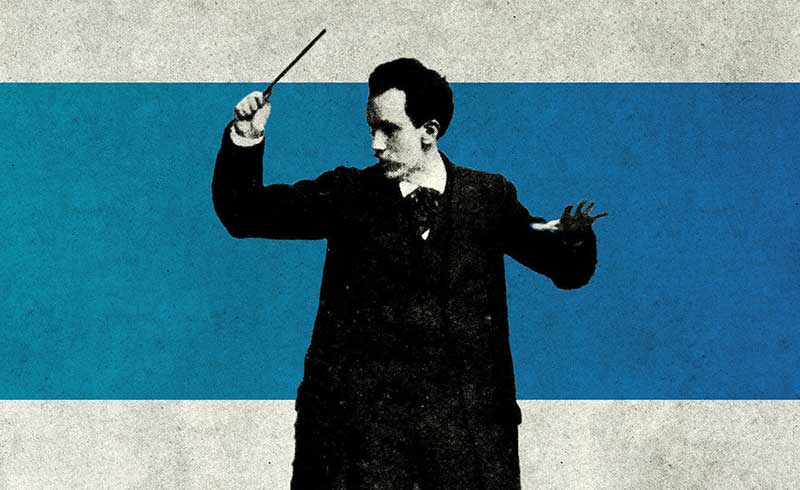
June 9, 2020
Music Tells the Story: 5 Great Strauss Tone Poems
What Shakespeare was to the sonnet, Richard Strauss was the tone poem.
Pioneered by Franz Liszt in the mid-1800s, tone poems took the then-groundbreaking step of tying music to an extra-musical source—usually, a poem, novel, painting, or landscape—allowing music to “tell the story.” In the tone poem Strauss found a perfect outlet for his compositional voice, turning out an astounding array of pieces now widely regarded as pinnacles of the form. His work not only elevated the tone poem to new heights but redefined the scope of music itself, championing realistic expression of everyday sounds and embracing everything from sprawling philosophical epics to autobiography and comedy.
As we celebrate the anniversary of Strauss’s birth on June 11, grab your headphones and take a moment to enjoy the drama, adventure, imagination, and excitement of some his greatest creations. You can also listen to these musical selections as a Spotify playlist.
1. Don Juan
Story inspiration: Legendary ladies’ man Don Juan—more specifically, poet Nikolaus Lenau’s version of the legend, in which the title character sets out on an idealistic search for “perfect love” and, ultimately disillusioned, allows himself to be killed in a duel.
Music: Composed when Strauss was only 24, this is music that surges with youthful fire and pulse-quickening passion—the famous opening bars practically spring to life with an exuberant, self-assured flourish. With this work, the young composer dreamed up some of the most technically challenging music ever conceived. Excerpts from the piece are regularly used in professional orchestra auditions, and experiencing it live provides a dazzling show of an orchestra’s collective virtuoso technique.
2. Ein Heldenleben (A Hero’s Life)
Story inspiration: Strauss sought to write a heroic work in the mold of Beethoven’s Eroica Symphony. He may have had himself in mind for the role of hero, weaving threads from his own life into the narrative tapestry—including a portrait of his wife, and an inside joke at the expense of music critics.
Music: When writing A Hero’s Life, Strauss quipped, “It does have lots of horns, horns being quite the thing to express heroism.” As promised, the piece is filled with the kind of soaring, brass-powered strains that make you want to crank up the volume on your listening device. Also of note is an extended and virtuoso solo for the concertmaster (which lovingly depicts Strauss’s wife as “the hero’s companion”) and a raucous battle scene.
3. Also sprach Zarathustra
Story inspiration: Nietzsche’s philosophical novel of the same name.
Music: The iconic “Sunrise” opening of Also sprach Zarathustra emerges from a low rumble, slowly builds, and ultimately erupts into the universe-quaking fanfare of 2001: A Space Odyssey renown. Following what may be the most well-known 90 seconds in music, Strauss launches into an epic philosophical quest, magnifying questions posed in the subject matter, expressing infinite meaning without a single word, and giving voice to Nietzsche’s view that “without music, life would be a mistake.”
Learn more about Also sprach Zarathustra.
https://www.youtube.com/watch?v=S7O9Oa22nsQ
4. Till Eulenspiegel’s Merry Pranks
Story inspiration: Till Eulenspiegel, a mythical prankster from German folklore whose tricks often come at the expense of the rich and powerful.
Music: This is Strauss at his comical and colorful best, and after a “once upon a time” opening statement, the listener is swept along for the ride as the title character (represented musically by horn and clarinet) cavorts from prank to prank. By the end of the piece he has been captured and punished, but still manages to get the last laugh.
Learn more about Till Eulenspiegel’s Merry Pranks.
5. An Alpine Symphony
Story inspiration: The Alps were a powerful, awe-inspiring, and ever-present force in Strauss’s daily life, and his Alpine Symphony vividly recreates the thrills, perils, unexpected moments, and ultimate sublimity of a daylong trek. Along the way, we encounter a glittering waterfall, sunny meadows and pastures, a glacier, a thunderstorm, and a breathtaking view from the summit.
Music: For his final tone poem, Strauss harnessed the power of one of the largest orchestras ever assembled—some 125 musicians—including a legion of offstage brass, two timpanists, and rarely used instruments like the heckelphone, thunder machine, and wind machine. The result is a totally immersive, transportive, and one-of-a-kind concert experience that fuses nature, in all its wild and multifaceted glory, with the limitless expression of music.
Follow along as we celebrate Strauss’s birthday on June 11. Enjoy more music by Richard Strauss in a Houston Public Media broadcast of a 2019 concert on June 14 & 17. Broadcast details






